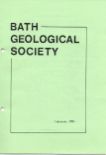Cosmic Spherules

These Cosmic Spherules were first noticed in the deep ocean sediments dredged up from the depths of the Mid-Pacific by the Challenger Expedition of 1870. They are the minute dust particles which settle on the earth from outer space, but can only be found in the red Clays of the deep ocean floors. Elsewhere they are lost in the other land debris. Now under the electron microscope their structure can be studied. Since most of them contain some form of iron they can be extracted from a core by a magnet. Their composition is the same as the meteorites, nickel, iron, olivine and pyroxene coming probably from the Asteroid belt, which is further from the sun than the Earth, and consisting of many fragments of a one time planet.
These fragments collide and make this cosmic dust which then gets drawn into the earth’s magnetic field. Falling through the earth’s atmosphere at about 11kms per second, the outside of the spherules form fusion crusts, which vary with the mineral composition. Magnetite does not melt, but is glazed over, while nickel with a lower melting point changes and flows. These changes during flight can be classified and by their shape show their flight path through the atmosphere.
The ‘false dawn’ of the tropics is caused by these dust particles and astronomers also see these sun-lit dust droplets through their telescopes.
